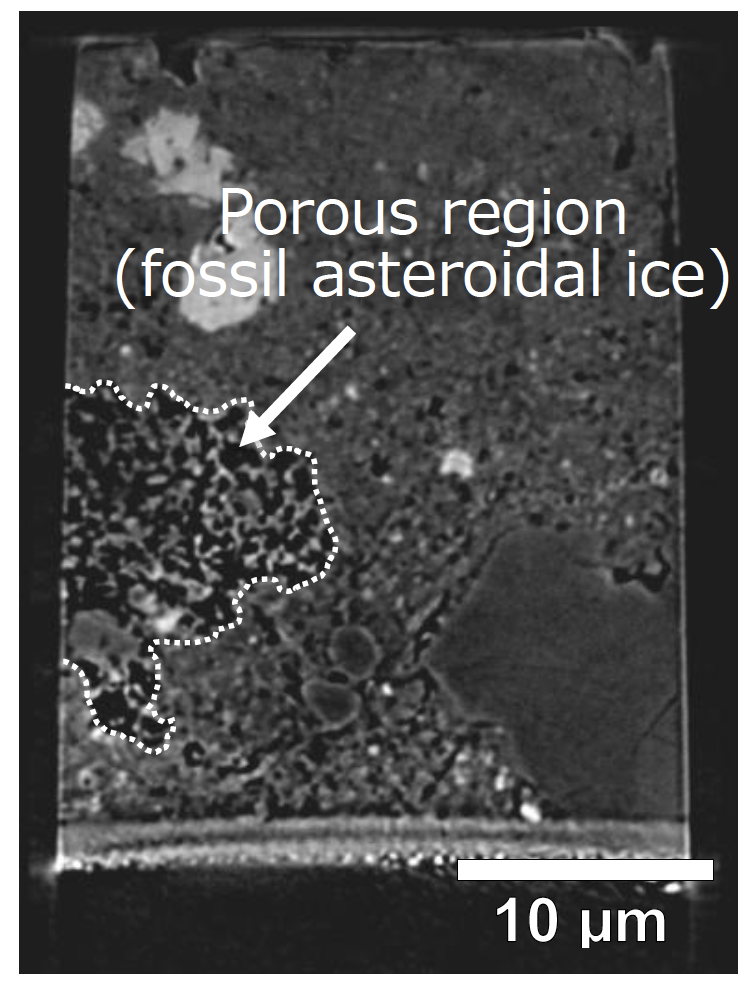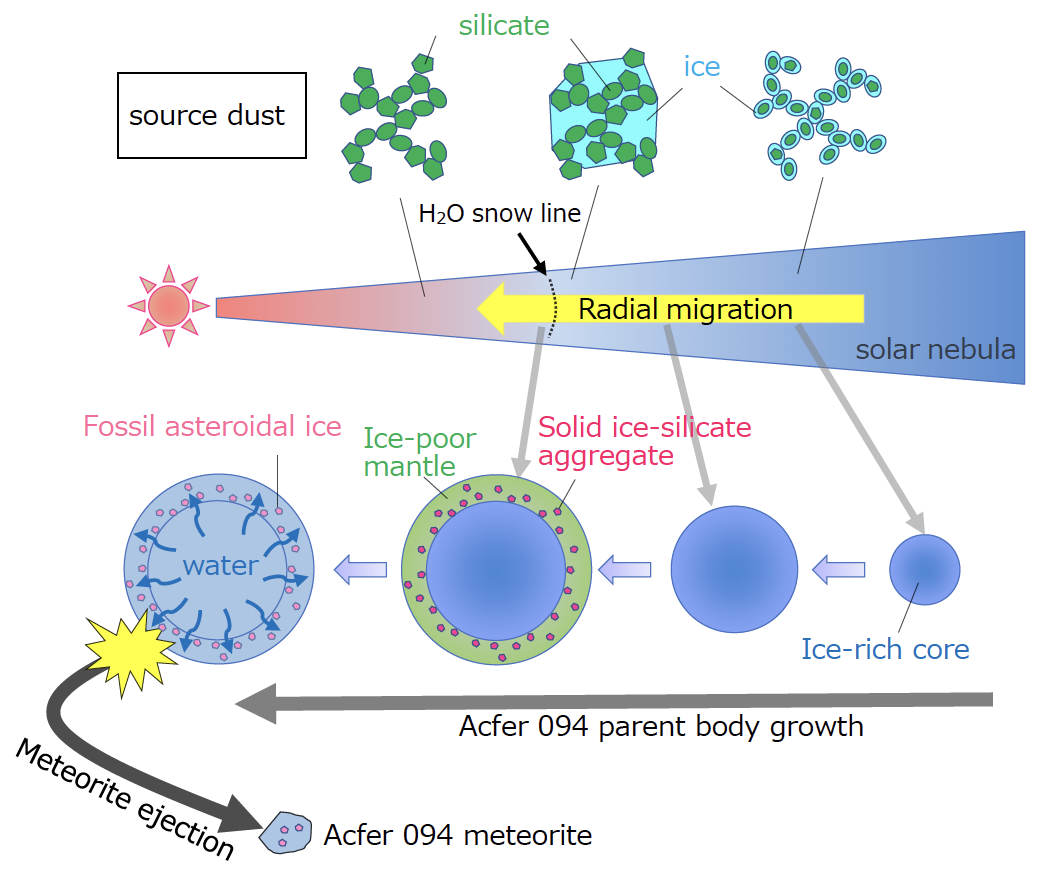A research team including Akimasa Kataoka at CfCA/NAOJ has discovered evidence of asteroidal ice within a meteorite. Performing high-resolution CT imaging of a primitive, 4.6 billion year old meteorite, the researchers discovered micrometer-sized ultra-porous regions inside the meteorite. It is highly likely that the regions were originally filled with ice, which has since disappeared to form the ultra-porous regions.
Full story: "Researchers Discover Asteroidal Ice Fossils in Primitive Meteorite" (December 23, 2019, NAOJ Division of Science Web Release).

© Megumi Matsumoto et al.

© Megumi Matsumoto et al.
[Research Paper]
Title: Discovery of fossil asteroidal ice in primitive meteorite Acfer 094
Authors: M. Matsumoto, A. Tsuchiyama, A. Nakato, J. Matsuno, A. Miyake, A. Kataoka, M. Ito, N. Tomioka, Y. Kodama, K. Uesugi, A. Takeuchi, T. Nakano and E. Vaccaro
Journal: Science Advances
DOI: 10.1126/sciadv.aax5078
[For the Use of Contents in This Website]
- Contents are to be used with a clear indication of its copyright (e.g. (c) NAOJ.)
- If you would like to use the contents found in this web site, please follow Terms of Use of the Website of NAOJ.
